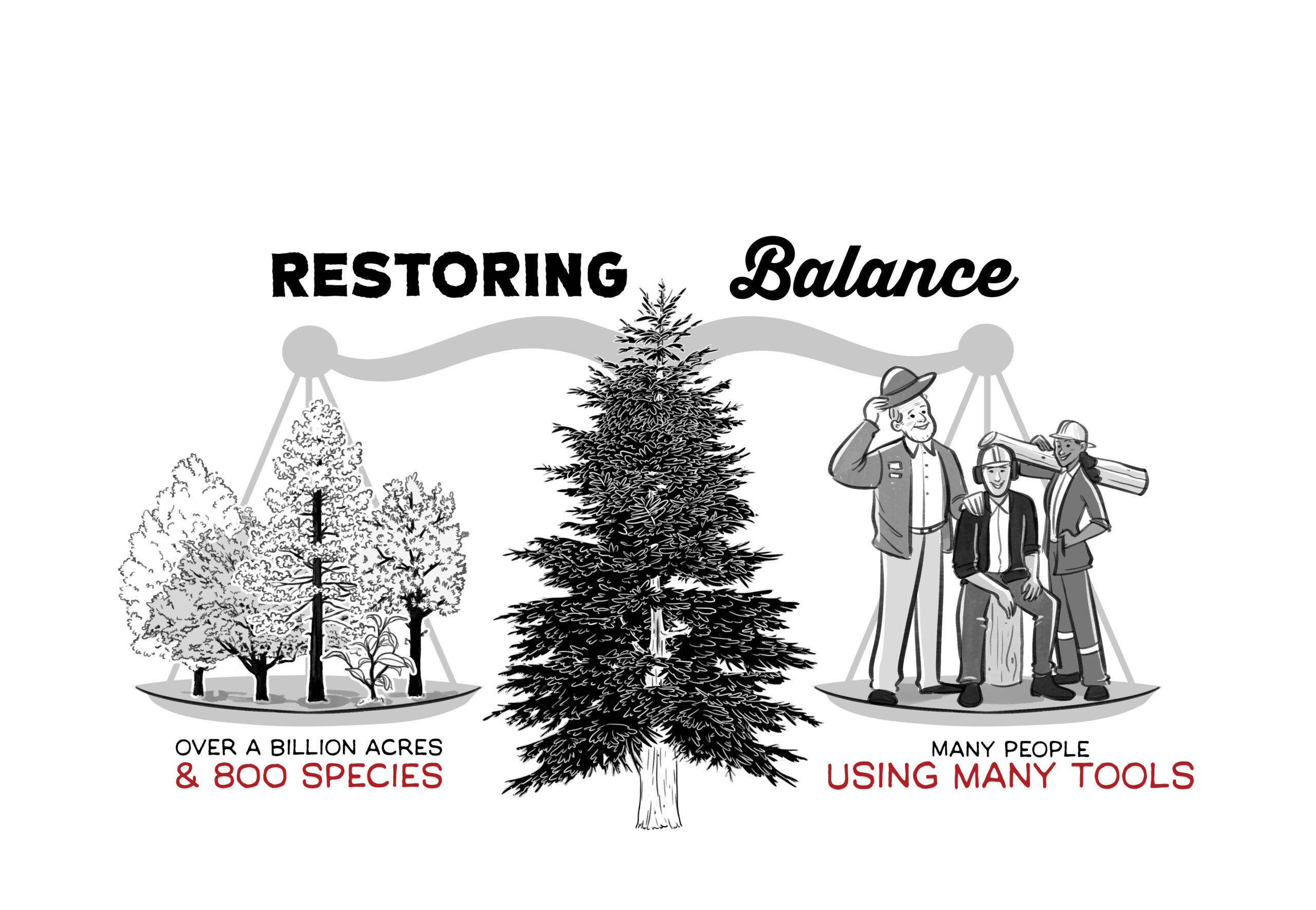Living with Fire
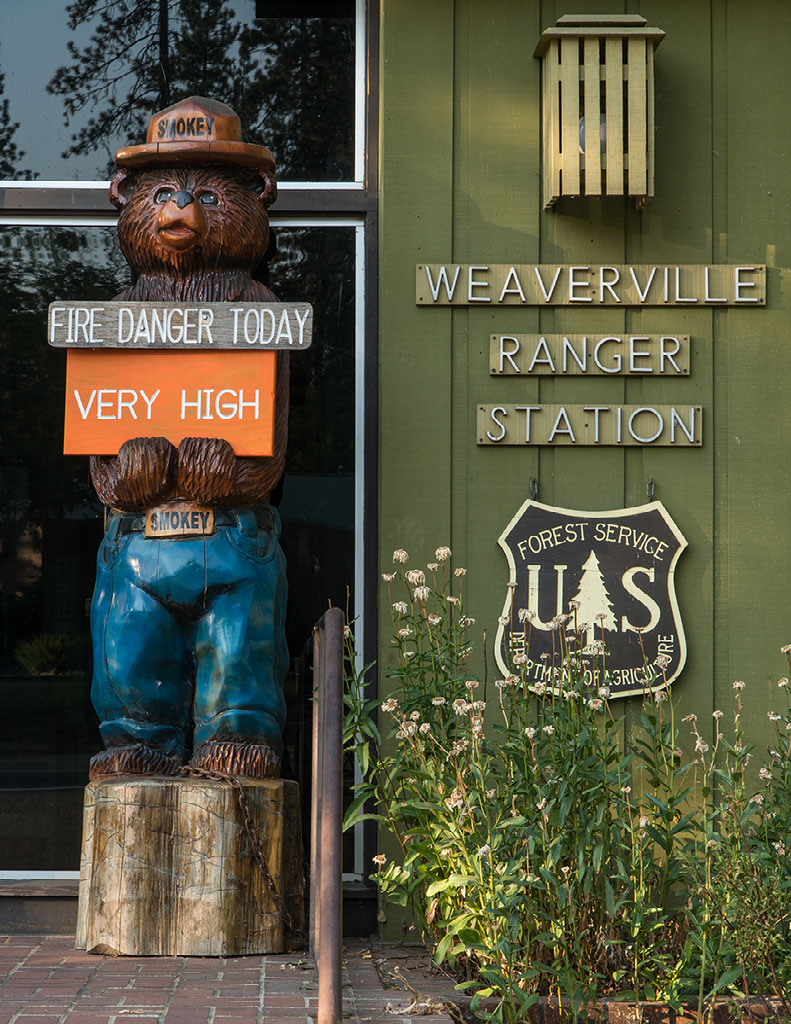
WORKING WITH FIRE ON THE LANDSCAPE
In Trinity County, California, wildfire is ever-present . Fires blackened 220,000 acres in 2015, destroying eight homes. In the last twenty years, fires have scorched 650,000 acres, almost a third of the 2 million-acre county. Large fires erupted in 2006, 2008 and 2015. Communities have been threatened by wildfire five times in 15 years.
Faced with a pervasive threat, one would expect forest managers to try to get ahead of wildfire by thinning small trees and brush from large swaths of land to keep fires smaller and less destructive. Across much of the West, this type of landscape-scale forest restoration is the new mantra of federal land management. To be sure, thinning is a part of the Trinity County strategy. However, local leaders and federal forest managers are also taking a different tack—living with fire.
Trinity County is a remote rural community deep in the steep and dissected Trinity Mountains. The once-thriving timber community boasted seven sawmills, but the Northwest Forest Plan and automation knocked out all but one of them. Between 1994 and 1996, salary income in Trinity County dropped forty percent. Good-paying jobs dried up and the economy tanked.
A NEW PATH FORWARD
Faced with massive job losses in the mid-1990s and a shift to ecosystem management, community leaders knew that their relationship to the woods had to change. They rejected the stark choices of “log it or lock it up” to start a local non-profit, The Watershed Research and Training Center, to find a new path forward for federal forest communities.
“The Watershed Center was born to retrain displaced forest and mill workers to do ecosystem management. We recognized early on that whatever ecosystem management was going to be, we needed to find opportunities for jobs in the woods and jobs for people working with wood,” said Nick Goulette, executive director of the Watershed Research and Training Center.
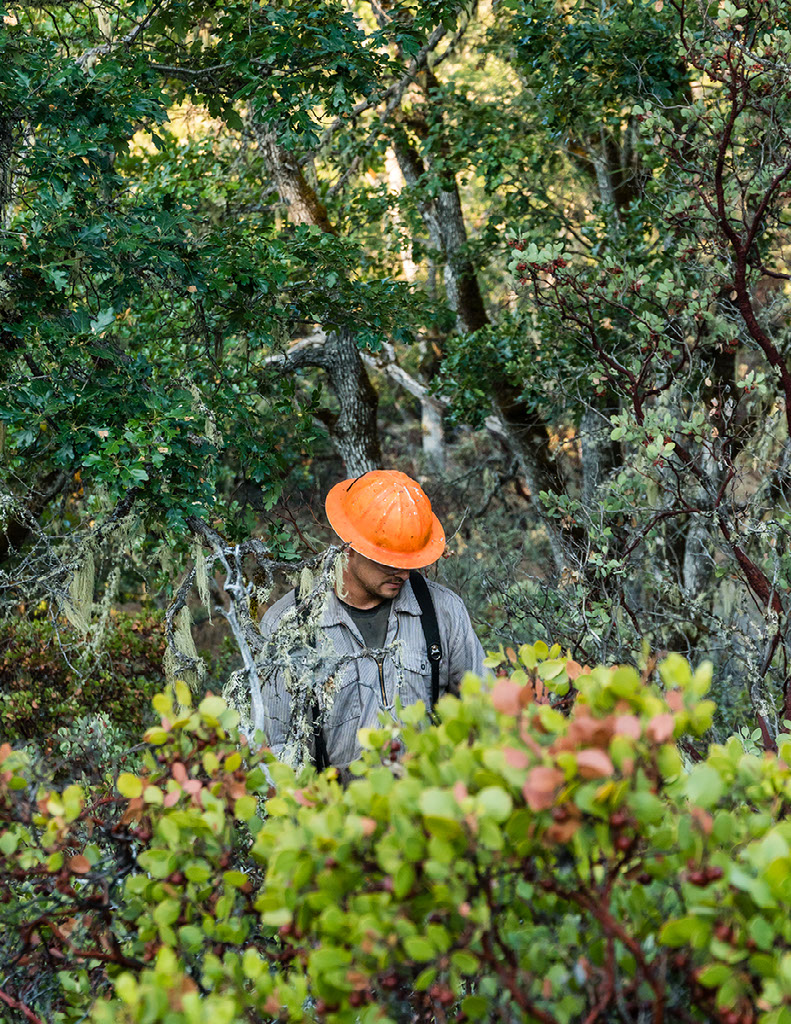
The path to aligning economic development with federal ecosystem management was bumpy. Lack of access to wood supply from federal forests short-circuited numerous attempts to create local businesses. The local sawmill was getting less than two percent of its wood from nearby public forests.
" We were living in a sea of trees and never had enough logs to run a business that everybody agreed we ought to have. "
Nick GouletteBORN FROM DECADES OF INACTION
Federal forest management can be controversial and litigious; especially in the last stronghold of the northern spotted owl. Convening diverse stakeholders can be effective at reaching agreement and avoiding lawsuits. Community leaders had collaborated on local projects but were exasperated by enduring stalemates over sticky natural resource issues such as timber sales and fire salvage.
Goulette and others convinced Trinity County to set up a standing natural resource collaborative. Meanwhile, local leaders brought Secretary of Agriculture Tom Vilsack to Weaverville (pop. 3600) where he learned about community needs and interests. Shortly after Vilsack’s visit, Forest Service Chief Tom Tidwell hosted a forum on forest management. “The visits from Secretary Vilsack and Chief Tidwell really gave the collaborative a unique and valuable kick in the butt,” said Goulette of the watershed center.
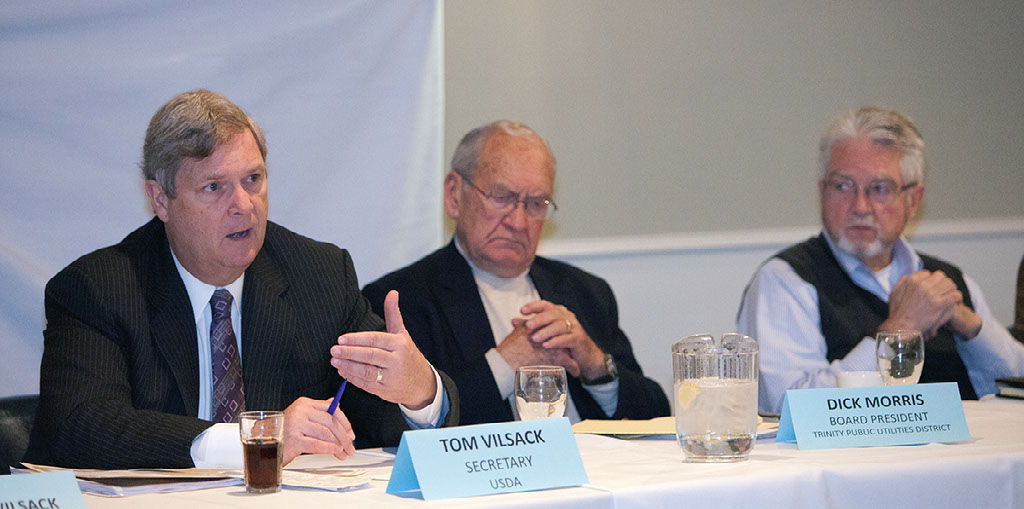
LIVING WITH FIRE: FROM GREEN TO BLACK
Fire became a touchstone that drew diverse interests—conservation, timber, recreation and local residents—to the table.
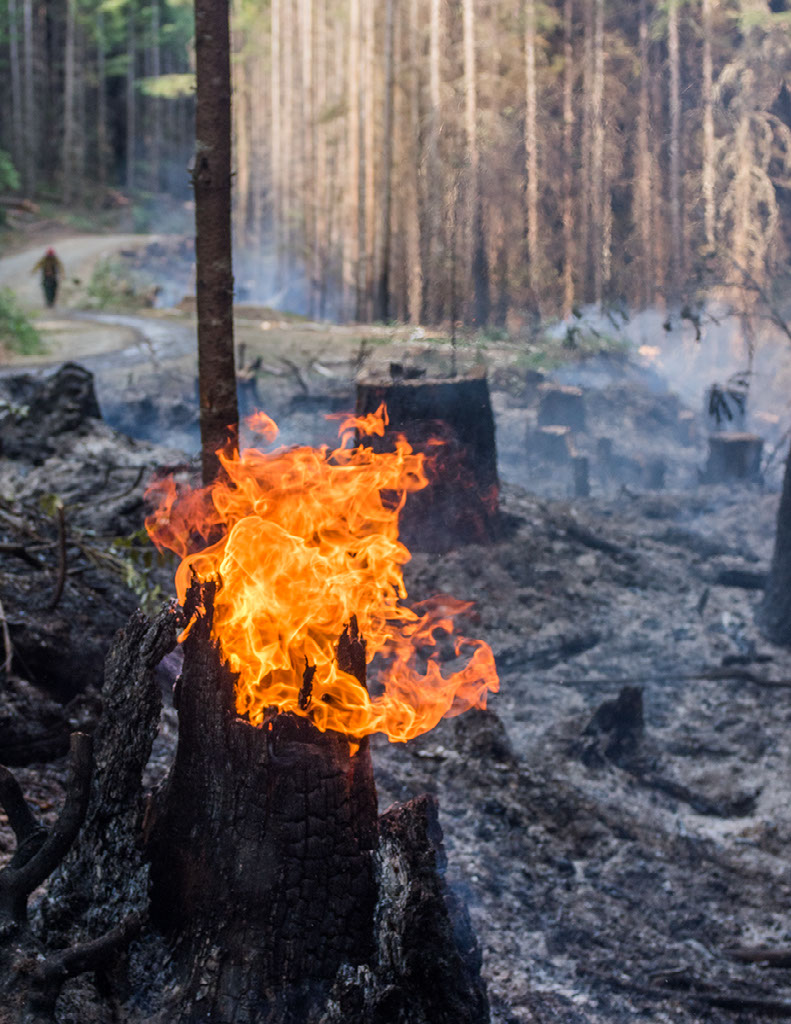
" Fire is the primary change agent on the landscape. The collaborative group fomulated a strategy that accommodates wildfire and finds better ways to live with it. "
Nick GouletteThe strategy aims to keep communities safe in a fire-prone landscape while supporting local businesses that use small-diameter trees from treated areas. The collaborative focuses on cleaning up the mess left by last year’s fire. “We supported the Forest Service and their staff to pivot from green projects—projects that would thin and get ahead of the fire problem to black—cleaning up the fire problem from last year. And that resulted in a pretty ambitious proposal,” said Goulette of the watershed center.

The shift from green to black puts the emphasis on fire safety and transportation. When a wildfire threatens homes, residents need to get out and fire crews need to get in. Fire crews need places to safely fight the fire, referred to as anchor points. Remote rural communities often have only one way in and way out. The collaborative proposed that Forest Service officials focus on a series of roadside fuel breaks and fire salvage. The strategy was timely, avoided controversy, and most importantly, achievable.
" The vision is to work on all of the major road systems within the county, to create shaded fuel breaks anywhere possible. That totals 3,000 miles of roads and more than 30,000 acres of roadside thinning. "
Nick GouletteIf the landscape goal is about survival; the economic development goal is about hope. It aims to give residents a reason to stay—supporting local and regional businesses that create jobs. The goals reinforce each other. Markets for commercial products, such as saw logs or commercial firewood, lowers the cost of getting the work completed. “We cannot do all this work on the national forest with monies from our budget; we have to be able to sell commercial products,” said Dave Meyers, forest supervisor of the Shasta-Trinity National Forest.
BUILDING RELATIONSHIPS, BENEFITING BUSINESSES
When people spend big chunks of time on challenging topics two things can happen—they get to know and respect each other or they walk away swearing never to come back. In Trinity County, collaboration strengthened bonds and and built a foundation for new partnerships.
Case in point: Trinity River Lumber is the largest customer of the Trinity Public Utility District, representing 10 percent of their load. According to Paul Hauser, general manager of the Trinity PUD, the district has more than 500 miles of power lines in the Shasta-Trinity National Forest. “It’s critical how that land is managed for the health of the utility and the local community,” said Hauser. He credits the collaborative for furthering the utility’s role in business development.
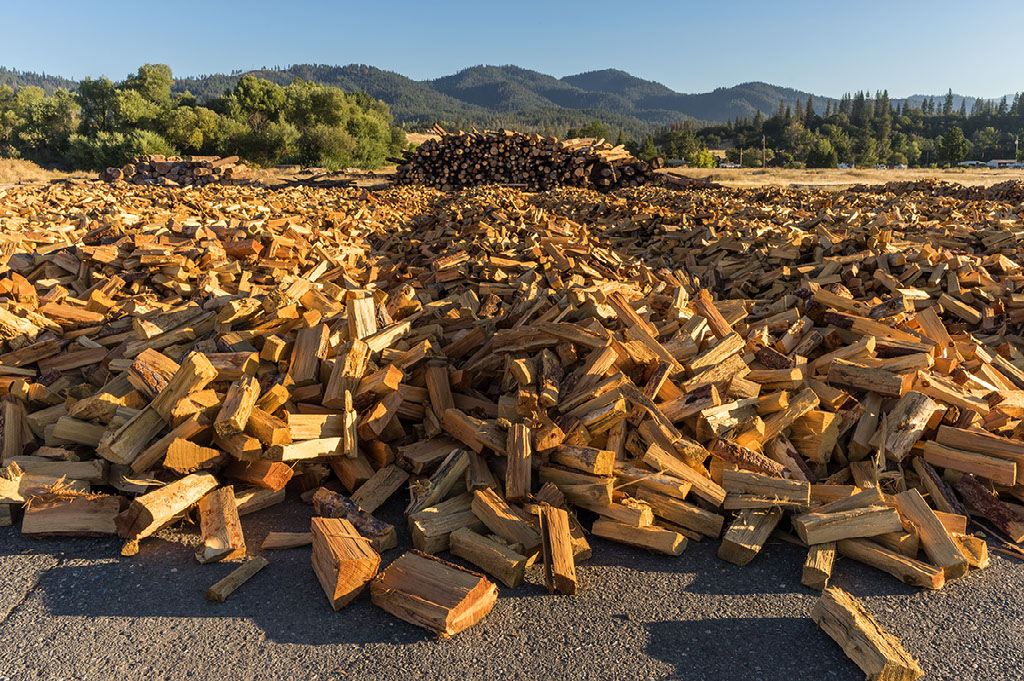
California has the largest commercial firewood market in the U.S. When Goulette learned this he saw a business opportunity that fit the shift from green to black. A commercial firewood business could use the dead, downed and charred wood coming from roadside thinnings and fire salvage. With the help of USDA Rural Development—a federal agency charged with rural economic development—they discovered a grant program that allows public utilities to guarantee loans to local businesses. “Trinity PUD is the conduit for the loan. We guarantee the loan’s repayment and funnel low-interest federal funds to the business so they can invest in infrastructure and get off the ground,” said Hauser of the Trinity PUD.
The Trinity Public Utility District loaned $400,000 to Tule Creek Forest Products—a new commercial firewood operation in Hayfork, CA—to get them up and running. Tule Creek currently purchases a mix of federal and private timber. They buy small federal salvage sales and they buy and trade for logs with other buyers of federal salvage sales.
SUPPLY CHAIN SERVES LANDSCAPE STRATEGY
Federal forest restoration relies on a mix of appropriated dollars and product value to accomplish work on the ground. Restoration projects are expensive and many of the smaller trees and brush have limited commercial value.
" You have to design projects that pay their own way. If you do a stewardship contract, you can't get the necessary work completed without commercial value. "
Paul HauserFederal stewardship contracts use product value, such as sawlogs, to pay for service work, such as thinning, piling and burning of small trees that cannot be made into products. Larger trees fetch a higher price but may not align with restoration objectives and public sentiment. Where product markets exist, the cost of restoration projects goes down. Conversely, with no markets, the full cost of needed work must come from scarce federal dollars.
The supply chain for Tule Creek aligns with the shift to “the black”. Other more traditional businesses that rely on “the green” also benefit. Goulette and officials with the Shasta-Trinity National Forest hope that expanding forest thinning projects will spur new growth in the forest products industry. As evidence that the strategy is beginning to pay off, they point to long-time industry partners such as Trinity River Lumber in Weaverville and Sierra Pacific Industries in Anderson purchasing timber sales and stewardship contracts from the national forest. Equally important, they highlight new businesses such as Blue Lake Roundstock, a post-and-pole operation near Redding, that are creating demand for the low-value trees resulting from forest health projects.
BLUE LAKE ROUNDSTOCK—AN INTEGRATED SOLUTION
Economy of scale matters: Small-scale production of low-value wood is not a recipe for a sustainable business. Producing a suite of products where waste from one process becomes a low-cost input to another improves efficiency and boosts profits. It’s called industrial ecology and the traditional wood-products industry has been doing it for decades. For example, using bark and chips from processing raw logs to fuel a kiln drying lumber or veneer. Now, the concept is being applied at Blue Lake Roundstock in Anderson, CA.
Zane Peterson, log buyer for Blue Lake, is planning more than a post and pole operation at their former mill site near Redding, CA. He envisions the family business as a fully integrated biomass solution center that contributes to forest health by providing a market for low-value logs. The expansion plan calls for selling commercial firewood and biologically enhanced soil. A small-scale heat and power generator will convert wood waste from operations to power the site and the electrical equipment. The integration and co-location of different businesses aims to improve the bottom line of all partners.
The growth of businesses like Blue Lake reinforces the idea of building a solid pipeline of projects. Here’s general concept. The collaborative creates consensus on projects, Forest Service officials convert concepts to stewardship contracts and timber sales and industry purchases the wood and completes the restoration work.
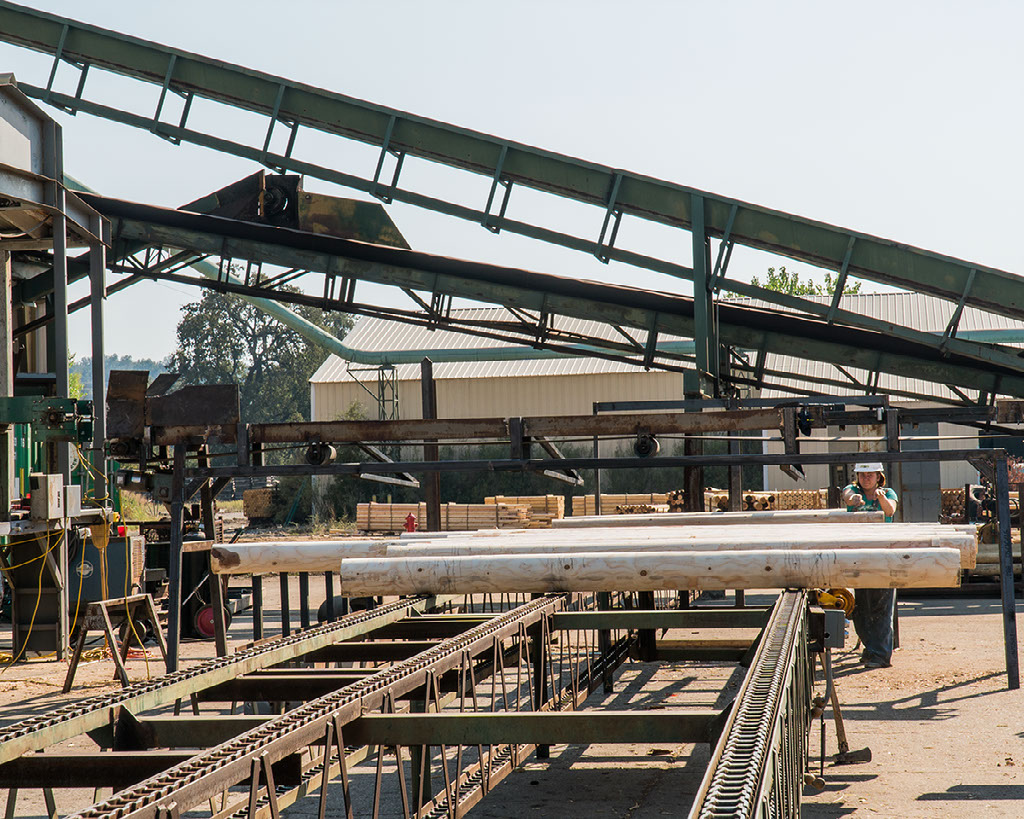
“The collaborative strategy supports local and regional businesses such as Trinity River Lumber, Tule Creek Forest Products, Blue Lake Roundstock and Sierra Pacific Industries. It increases the alignment of Trinity and Six Rivers National Forests with those businesses in the future. We are beginning to see projects come through the pipeline in the form of stewardship contracts,” said Goulette of the watershed center.
RURAL-URBAN PARTNERSHIPS
Trinity County leaders are building a system where the profit motive supports public land stewardship—indispensable in a county dominated by federal land. Equally important are the rural-urban partnerships that provide market access and expertise to explore innovation.
Jim Jungwirth knows a thing or two about rural business development. In 1996, he started Hayfork-based Jefferson State Forest Products which manufactured high-value, locally-sourced wood products. He developed a line of artisan produce bins for Whole Foods Market and grew the company to 56 employees and $6 million in gross annual revenue. He sold Jefferson State in 2007 but remains committed to finding innovative uses for under-utilized wood. The optimism of a serial entrepreneur still drives him but he’s candid about the hurdles facing rural startups.
" In rural areas, you have to create products that urban markets want. "
Jim Jungwirth“And that’s what we did with Whole Foods. It is very difficult to start a business in a rural area that is dependent only local markets. So build partnerships with urban areas that are looking for the products that you can create,” said Jim Jungwirth, economic director program director at the watershed center.
Sudden Oak Death—a pathogen that attacks oaks—has killed thousands of tanoaks and other species in northern California and southern Oregon. The main defense against this quiet killer is cutting and burning the infested trees inside the quarantine zone. The thought of so much good wood going up in smoke piqued Jungwirth’s commercial curiosity. He dug into product options and discovered a company that made baseball bats from tanoak in the 1960s. Determined to find out if it could be done in Hayfork, he enlisted some “virtual citizens” to help—experts who understand the plight of rural communities and have the technical expertise to offer. They figured out how to dry the wood and built a beautiful prototype.
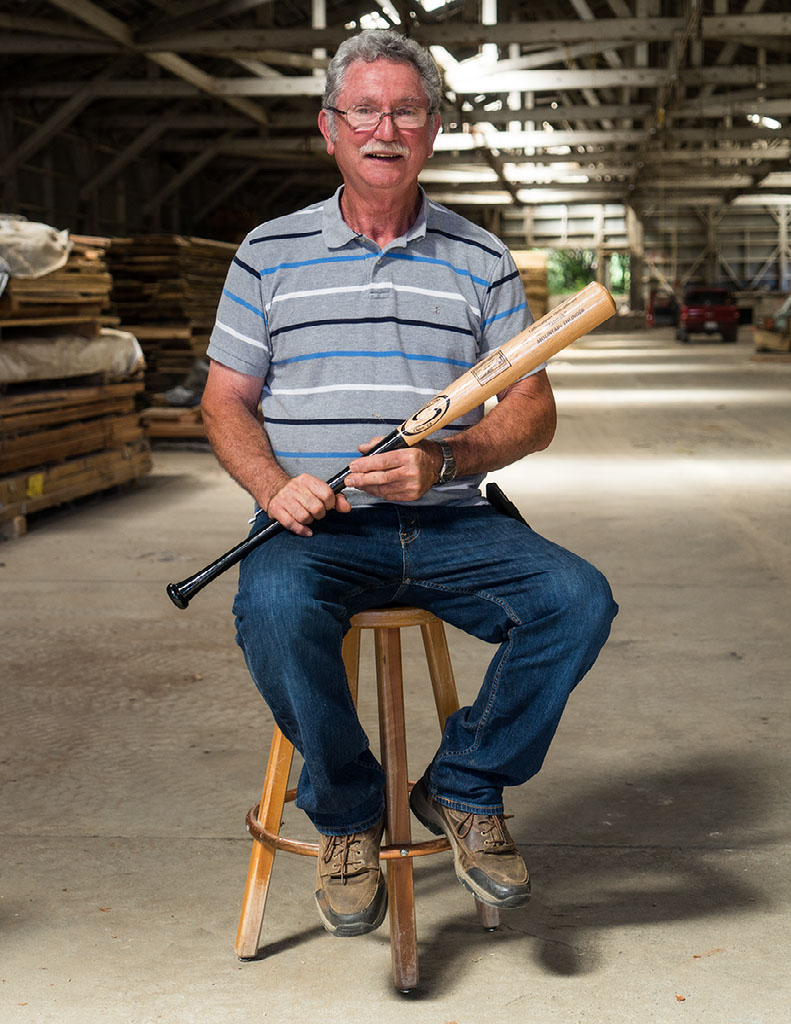
" Keep an eye out. The next time your favorite slugger steps up to the plate, he might be swinging a tanoak bat made in tiny Hayfork, CA. "
The efforts in Trinity County show that the old paradigm that pitted communities, timber industry and conservationists against each other no longer holds. In today’s environment of frequent fires and limited public funds, solutions are forged at the collaborative table. Living with fire means learning to work together both as a collaborative and as a community. And that is a lesson for all of us.
Words and pictures by Marcus Kauffman, Oregon Department of Forestry. Videos by Dan Bihn.
Project support provided by USDA Forest Service and the Oregon Statewide Wood Energy Team.

